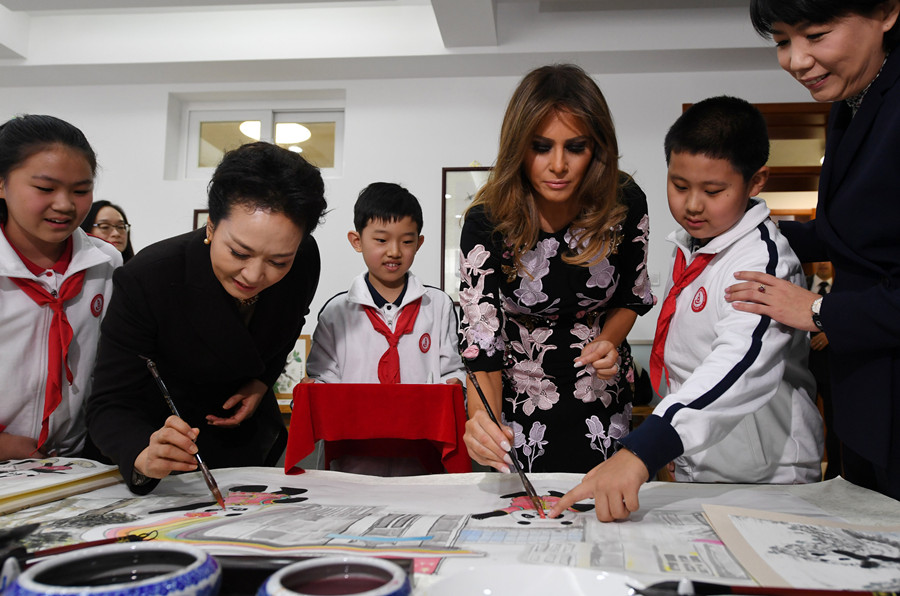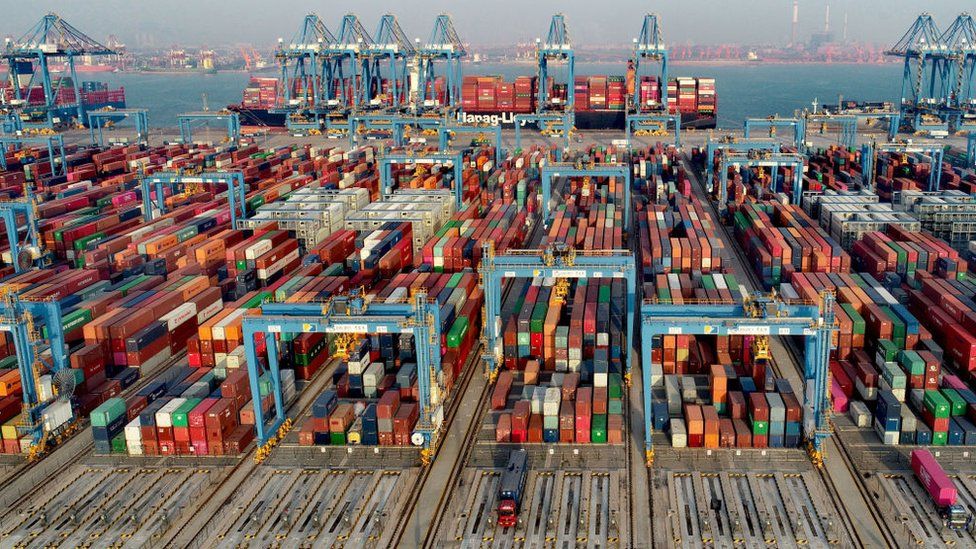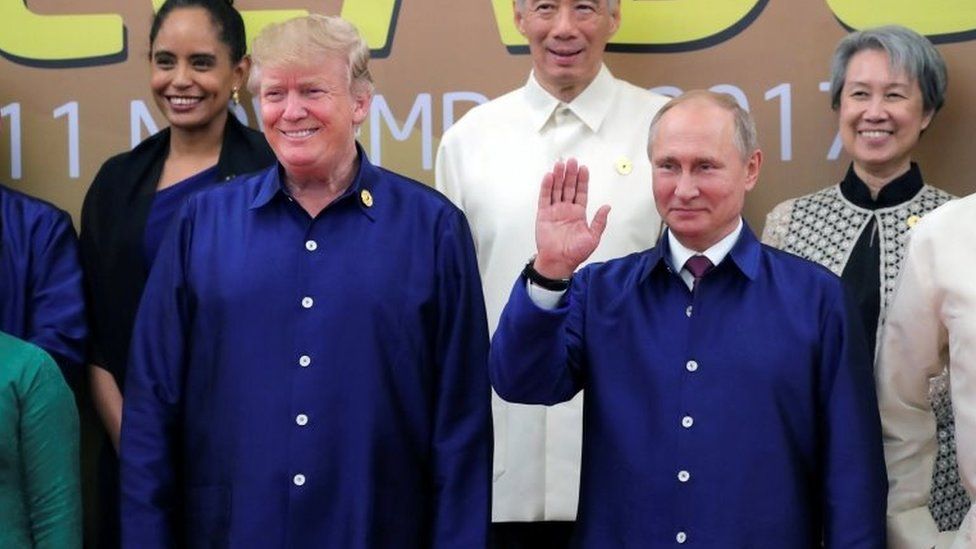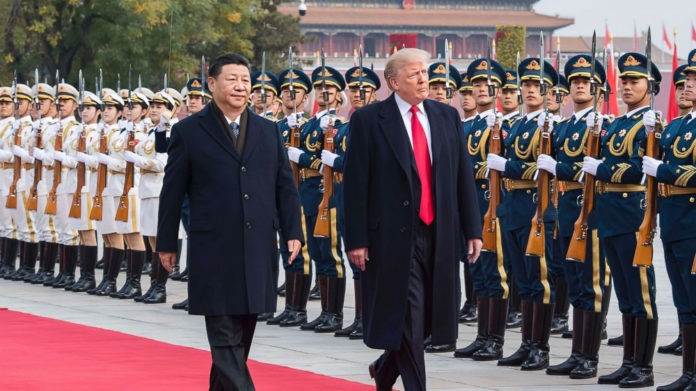President Donald Trump’s visit to a portion of Asia presents an interesting case study in statecraft. Packaging of countries for the visit included China, and some of the countries America wants to employ for containing China—Japan, South Korea, Vietnam and the Philippines. The tour had three driving objectives: to enhance reciprocity in commercial activities, to boost alliances and partnership, and to augment constituency for impeding, halting and reversing North Korea’s nuclear weapons programme. After the visit, Trump is wiser on how difficult it is to advance each of these objectives. The visit was marred by inconsistencies and contradictions. In terms of achievements, it was more in terms of nuance than substance. Three things came to the fore: America and China will continue to compete for political preeminence in Asia and this will be a losing battle for Trump and his successor(s), who are likely to have a hard time ceding America’s long-standing primacy in Asia; contradictions between Washington’s historic obligation to economic globalization and Trump’s “America First” policies are unlikely to smoothen; and, majority of the countries toured had already begun to diversify their security dependence, even though before landing in Beijing, Trump had warned the region not to test American resolve and promised to sell lots of advanced arms to its Asian allies.
During the visit, Trump also participated in two major regional summits — the forum for Asia Pacific Economic Cooperation in Vietnam and the East Asia Summit in the Philippines, alongside bilateral visits to Japan and South Korea. Of these Trump’s visit to Beijing was undoubtedly the most important element of this sojourn. Some Asian leaders aligned with Trump’s usual rhetoric i.e. Japanese Prime Minister, Shinzo Abe, and the South Korean President, Moon Jae-in, played up “making America great again”. Saying good sounding things is traditional part of public diplomacy, however, while flattery certainly triggers the right mood it is not enough to resolve hard core problems and that is what actually happened.
Misplaced hypes about the 21st century being Asia’s century in general and China’s century in particular has unnerved the American strategists and its allies. Alongside feigning denial mode about this transition, America is following a two-pronged strategy: Firstly, it is doing what all it could to divide Asia into 4-5 competing and quarrelling power centres and secondly, it is prompting neighbours of China to hype-up historic, but longtime dormant, conflicts pertaining to territorial claims and resource sharing. China is handling American machinations through prudent diplomacy and apt maneuvers and its responses are measured and steady. Trump‘s walking away from the Paris Agreement on Climate Change and Trans-Pacific Partnership (TPP), a free trade deal, has catapulted China on leadership role with regard to both these futuristic treaties.
Trump’s extended swing through Asia underlines the deep difficulties in sustaining the present order in Asia. At the root of the Asian instability is the changing dynamic between the traditional hegemon, America, and its challenger, China. Rise of China and chaos in the US domestic politics have created greater disorder than expected and, that too, pretty quickly. This environment has opened up more venues for anarchic Indian diplomacy in Asia. Indian state terrorism in Indian occupied Kashmir has intensified, and the Doklam fiasco is the latest manifestation of Indian hubris. Indian is meddling in Afghanistan and carrying out terrorist attacks in Pakistan; America is not only overlooking these Indian actions, but is also encouraging it.
The paradox is that Washington and Beijing need each other, the terms of a new economic and political settlement between the two are evolving. However, Xi-Trump summit did not shed light as to the emerging format. Trump’s exchanges with Xi were also emblematic of the new complexities driving Asian politics. These included America’s demands for “fair” rather than “free trade” with Asia and the problem of accommodating China’s rise without abandoning its long-standing allies and friends in the region.
Trump’s journey to Asia began in the shadow of North Korea. To welcome Trump, Kim Jong-un had already sent two long range missiles over Japan and conducted its sixth and biggest nuclear test. This had prompted the Japanese citizens rehearsing drills in case of a nuclear attack. Despite harsher sanctions, Pyongyang has shown no sign of slowing down the pace of weapons development.
And to ward off pressure on North Korea’s nuclear pursuits, China dispatched a special envoy to North Korea on November 17. The envoy’s tour is being hailed as a “big move” by President Trump, who has urged Beijing to pile pressure on North Korea. Diplomat Song Tao has traveled to North Korea on behalf of President Xi Jinping to brief officials on the recent Chinese Communist Party congress and other “issues of mutual interest”, foreign ministry spokesman Geng Shuang said. However, analysts opine that Song “would mainly address the nuclear standoff”.

China has backed the United Nations sanctions on North Korea over its missile tests and six nuclear tests. But experts doubted whether Song’s visit could yield major breakthroughs. The US wants China, which accounts for 90 percent of North Korea’s foreign trade, to put more economic pressure on the reclusive regime. According to Bonnie Glaser, a China Expert at a Washington think tank Center for Strategic and International Studies, “China has virtually no political influence on North Korea. Its influence is derived from economic leverage.“ Songs visit was “more about warning North Korea against going to extremes than forcing it to give up the nukes”.
China has also imposed its own banking restrictions on North Korea in addition to enacting a series of UN measures that includes ban on imports of coal, iron ore and seafood from the North. But Beijing fears that squeezing Pyongyang too hard would cause its collapse. President Xi had floated a smart proposal for negotiations and a “dual track approach” in which the United States would freeze its military drills in the region while North Korea halts its weapons programmes. The proposal calls for North Korea to freeze its missile and nuclear tests in return for the United States and South Korea suspending their annual joint military exercises. “Suspension-for-suspension is the most realistic, viable and reasonable solution in the current situation,” Geng Shuang said at a regular news conference. “I stress that it’s only the first step, not the end.” Trump claimed that during their talks Xi had agreed to drop his plan. But Beijing has stood by its policy. “We believe that at the moment, this is the most realistic, feasible, fair and reasonable plan,” Geng said. Later, White House press secretary Sarah Huckabee Sanders also acknowledged that the two leaders had not agreed that the freeze proposal should be dropped. United States does not appear to have a proposal to counter China’s freeze-for-freeze idea to de-escalate tensions.
This back-and-forth, coming just two days after the president’s return from his Asia trip, highlights the lack of coherent policy put forward by the United States to actually usher North Korea along the path of denuclearization. According to James Acton, co-director of the nuclear policy program at the Carnegie, there was a lack of unity and clarity coming from the US administration itself over what actions from North Korea might open the door to negotiations, what an acceptable path was to de-escalation, and even whether its ultimate goal was still regime change. “One question is what would the preconditions be for the US to sit down with North Korea to negotiate,” he said. Even though Trump claimed that his Asia trip forged new unity against North Korea, nothing has moved on the ground.
While in Seoul, Trump told the North Koreans that the path to a better future begins with “a stop to your development of ballistic missiles, and complete, verifiable and total denuclearization.” Trump planned a secret visit to the demilitarized zone at the heavily fortified Korean border, but heavy fog forced his helicopter to turn back. And while in Tokyo, he said that if North Korea returned Japanese citizens whom it had abducted, that could be a “tremendous signal” and would be the start of something. The US envoy to North Korea, Joseph Yun, is reported to have proposed that if North Korea announced and carried out a halt to its nuclear and missile tests for 60 days, that would be a sign that the United States should restart a dialogue. The Japanese government has been discussing a “maximum pressure” approach with the governments of South Korea and China.
Trump considerably toned down his belligerent rhetoric and spoke in more measured tones about North Korea, pledging for example to use “all available tools short of military action.” With unilateral US military action off the table as too risky, and little or no prospect that China will apply additional severe economic sanctions, the US administration has little option but to accept that it will have to live with a nuclear North Korea. In the broader strategic context, a nuclear North Korea suits America as it provides raison d’etre for American military presence on the Korean peninsula and for expanding its missile shield into Russia-China spheres of influence in Asia.

As regards trade, Beijing resorted to wrapping a package of commercial deals with American companies amounting to $250 billion but many of these “deals” are MoUs rather than commercial contracts. Majority of them will take a long time, if at all, to materialize. And this does nothing to resolve Trump’s political problem with America’s massive trade deficit ($300- to $500-billion). Trump’s decision to drop his hostile rhetoric against China in Beijing and his move to blame past American presidents for this deficit, did get many to jump to the conclusion that trade ties may be on the mend between America and China. Nothing of the sort happened.
Xi was quite demonstrative in emphasizing the partnership with America. He aptly declared that “the Pacific Ocean is big enough to accommodate both China and the United States”. He insisted that Beijing and Washington need to “jointly” promote peace and stability in Asia. This is one of Xi’s core demands on Trump to share the leadership of Asia. China had demonstrated its trajectory earlier this year with a push to its 2013 Belt and Road project, a vast global trade network with China at its heart. The South China Sea dispute may have been quiet over the last few months, China is going ahead with development in the disputed sea. Though Trump is known for lambasting China over allegedly unfair trade policies, currency manipulation and stealing US jobs, he avoided these topics at least publicly. Observers rule out any radical shifts in the US-China relationship.
With regard to Trump’s credibility, even Japan and Korea are nervous that the US will back off from its bilateral trade agreements. Though Trump’s “America First!” slogan is only aimed at a domestic audience, yet it does not go down well with trade partners abroad.
Tokyo wanted to know the contour of the US military co-operation. Seoul, literally in the firing line of its northern neighbour with artillery positioned over the border, was inquisitive about the same. And, paradoxically, after an unprecedented personal warning by Kim Jong-un to Trump, Seoul wanted Trump to tone down his rhetoric and keep options for dialogue open. Any threats exchanged when he was literally over the border were not expected to go down well. Both Vietnam, which puts dissenting bloggers in jail, and the Philippines, with its controversial drug war, have a patchy rights record. Philippine President Rodrigo Duterte has shown he is just as willing to woo China as the US.
Trump stood before a summit of Asian leaders keen on regional trade pacts and delivered a roaring “America first” message, denouncing China for unfair trade practices just a day after he had heaped praise on Beijing. Trump said he’d spoken “openly and directly” with Xi about the nation’s abusive trade practices and “the enormous trade deficits they have produced with the United States.” “We are not going to let the United States be taken advantage of anymore,” Trump told CEOs on the sidelines of the Asia-Pacific Economic Cooperation conference. “I am always going to put America first, the same way that I expect all of you in this room to put your countries first.” He said the US would no longer join “large agreements that tie our hands, surrender our sovereignty and make meaningful enforcement practically impossible.” Instead, he said, “the US will pursue one-on-one trade deals with other nations that pledge fair and reciprocal trade”. The message stood in sharp contrast to the behind-the-scenes negotiations taking place among other countries at the summit on a successor to TPP; minus the US, remaining 11 countries decided to go ahead with the partnership. Trade ministers from 11 nations remaining in the Trans-Pacific Partnership — representing roughly 13.5 percent of the global economy — said they had reached a deal to proceed with the free-trade pact after it was thrown into doubt when Trump abandoned it.
Trump addressed the crowd at APEC with a clear message: The U.S. will not continue to be taken advantage of by the World Trade Organization. It was a stark change in tone from the day before, when Trump was in Beijing. There, Trump opted for flattering Xi and blaming past US presidents for the trade deficit. Trump said China’s trade surplus, which stood at $223 billion for the first 10 months of the year, was unacceptable. Trump added forceful complaints about “the audacious theft of intellectual property,” ″massive subsidizing of industries through colossal state- owned enterprises,” and American companies being targeted by “state-affiliated actors for economic gain” he however did not single out China by name.

Behind the scenes, White House officials quietly negotiated with the Kremlin over whether Trump and Russian President Vladimir Putin would hold a formal meeting on the sidelines in Danang, Vietnam, with the Russians raising expectations for such a session. As speculation built, the two sides tried to craft the framework of a deal that Trump and Putin could announce in a formal bilateral meeting. The Summit did not take place. However, US and Russia issued a joint statement on Syria that reaffirmed previous commitments to defeat the Islamic State.
In Danang, President Trump issued two starkly contradictory calls on his trip to Asia: The nations of the world must rally behind the United States to confront the nuclear threat from North Korea, but they should expect America to go its own way on trade. Reconciling such messages will be hard, and it may determine the near-term fate of the United States as a Pacific power.
Contradictory messages illustrate transactional approach to statecraft. These competing impulses have left allies and adversaries confused, alike, about America’s motives and staying power. Trump’s comments in Vietnam lacked the solicitous tone he had used in China and Japan. Paradoxically, Trump’s relationship with President Rodrigo Duterte of the Philippines, accused of extrajudicial killings, in his nation’s drug war, improved substantially. Apparently, the traditional balancing act will be difficult to maintain.
President Trump declared his first Asian tour “tremendously successful” as he hopped on a plane heading back home. But he had few concrete accomplishments in hand. As he jetted across the region, to five nations, six cities and three summits over 12 days, Trump pushed regional leaders to reshape trade deals to America’s liking, but he won no firm commitments from his hosts. He opened the door to negotiations with North Korea but then seemed to shut it again by deriding the dictator Kim Jong Un as “short and fat.” He did not try to push leaders to end human rights abuses. At each stop on his trip, Trump both bemoaned the current state of US trade relations in the region and announced new business deals, including more than $250 billion in China. But most of those agreements were older, already agreed-upon or only promises. In Vietnam, he scolded China for unfair trade practices and delivered a forceful advocacy for bilateral trade deals, only to have 11 nations strike a multinational agreement hours later. Breaking with previous presidents, Trump largely abandoned publicly pressing foreign leaders on human rights. He said nothing about restrictions on civil liberties or press freedoms in China and Vietnam and, most notably, did not rebuke Philippine for overseeing a violent drug war that includes extrajudicial killings.
Senate Minority Leader Chuck Schumer called Trump’s trip a “flop.” “He seemed far more interested in pomp and circumstance — red carpets, fancy meals, and the flattery of foreign leaders — than advancing American interests in a region that is increasingly looking to China for leadership,” said Schumer. “And after the president’s performance, those countries are going to turn more to China”, he added.




